A big welcome to any new subscribers this week. Thank you for signing up, and I hope you find some interesting content here. This is my monthly diary post, free for everyone. Paid subscribers receive a weekly post where I get into a little more planty detail. I’m also running a series of interviews at the moment with some inspirational women gardeners. I hope you enjoy this journal and I’d love to hear your comments and feedback.
What incredible summer weather we’ve been having this spring! I’m such a warm-blooded person, I love it, but I can’t be alone in thinking it feels odd to have this level of heat at the end of April. The cow parsley and alliums are out already, and the tulips long gone; everything seems out of sync. By the time you read this, the heatwave may well be over, but there is no sign of any rain on the radar which is worrying to say the least. I was sitting under the willow having a cup of tea yesterday and noticed a few dry, yellowing leaves falling gently down around me. This morning there is a carpet of dead leaves which tells me that the tree is in stress. The entire tree looks droopy (yes, I know it’s a weeping willow but its branches and fronds look distinctly tired and wilted rather than full of life!) We have had virtually no rain for more than a month. And last year - the opposite.
What can we do? These extremes are a part of our lives now, and as gardeners we have to accept the unpredictability of the weather and try to mitigate the effects as much as we can. Planting resilient species that can tolerate both wet and dry conditions for prolonged periods will become increasingly important. I have written a whole series on this subject for House & Garden, interviewing some of our most experienced gardeners to get their lists of resilient plants, and I’ll be writing about some of these in the weeks to come.
Careful watering
Watering should be done judiciously, using saved rainwater where possible. I am no saint, however, and I have had to use the sprinkler in the last couple of weeks on the two newly planted borders. You simply have to water plants in to establish them. A few other new plants are dotted around elsewhere, and I have been spot watering them using water from the rainwater tank - especially the foxtail lilies that I am determined to see flower, and the hugely expensive intersectional peony ‘Kopper Kettle’ that has a single bud waiting to burst this year. And of course my seedlings, which have to be watered every day. The sooner they get into the ground the better - but it’s almost better holding off planting them until you see some rain in the forecast because you’ll be using much less water if all the seedlings are gathered together in pots than when they are spread around the borders.
When you do water, follow a few common-sense rules to make the most efficient use of this precious resource.
Water early in the morning or in the evening when it is cooler. If you water in the middle of the day you’ll lose more to evaporation.
Where possible water around the base of the plant rather than over the leaves so that it is soaking directly into the soil and getting to the roots where it is most needed.
Water longer and more deeply every few days rather than every day. If you water sparingly, roots tend to come to the surface rather than reach deeper into the soil.
Allow the plant to dry out in between. If you soak a pot plant that has completely dried out in a tray of water, remember to remove it when the compost has been completely saturated because the plant needs oxygen as much as it needs water.
Use grey or waste water from the kitchen sink by filling up a washing up bowl. This can capture the many litres of water wasted by waiting for the tap to get cool for drinking water. I use this for all the pots on the terrace outside the kitchen.
What’s happening in my garden
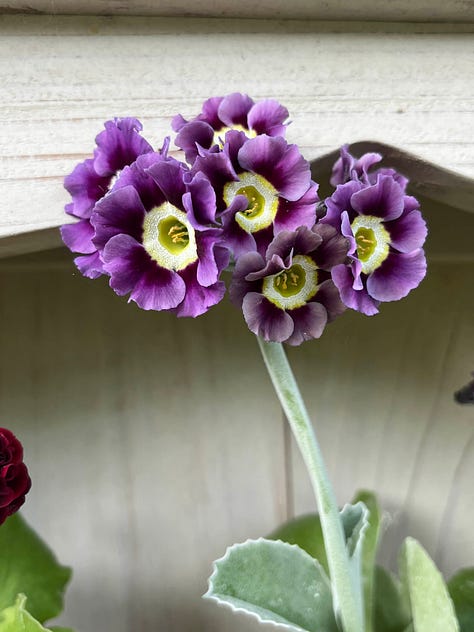
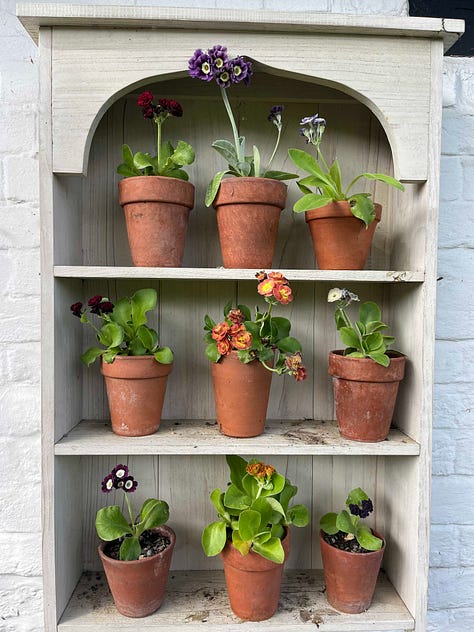
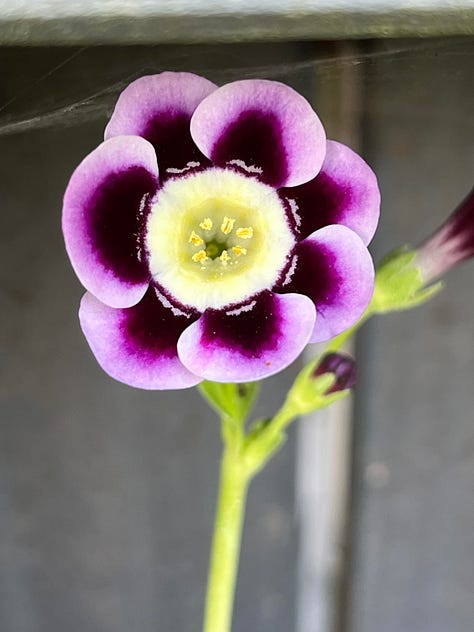
I’m very, very behind in the garden so I’ll be sowing lots of cosmos this weekend - normally I would do this in mid April. I also need to pot on masses of seedlings, sow some more vegetables and catch up with the weeding.
The auriculas are in full flow and I’m so pleased to see my collection flowering because I thought I’d lost them to woolly aphid last year. I managed to resist buying masses more on Tuesday when I went to join a very enjoyable Auricula Day organised by Rachel de Thame and her daughter Lauren. I came back with just two purchases! I’ll be posting the inspirational interview I did with Rachel next week.
Two fantastic viburnums flowering now
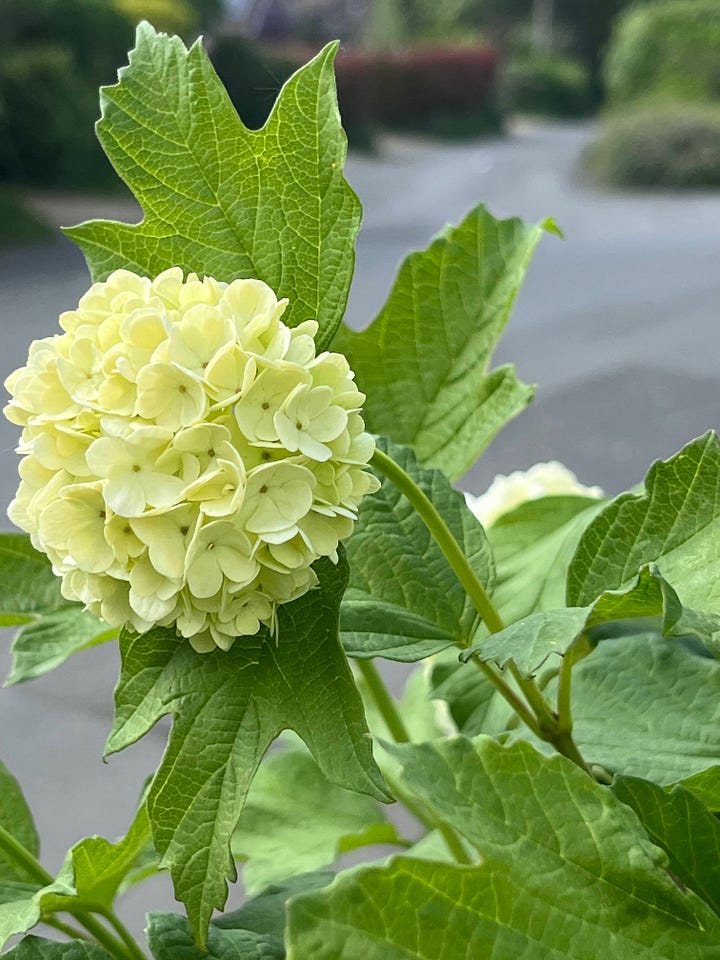

These two viburnums are wonderful for providing structure, with the bonus of a profusion of greeny-white flowers at this time of year. V. opulus ‘Roseum’ is fantastic for cutting, its flowers emerging a lovely apple green and eventually turning snowy white. It grows pretty much anywhere in full sun or a little bit of shade. ‘Mariesii’ is more delicate, with horizontally layered branches and the most beautiful and delicate lacy white flowers. It grows happily against the east-facing wall of my kitchen in a huge bathtub container, in shade for much of the day.
Wallflowers
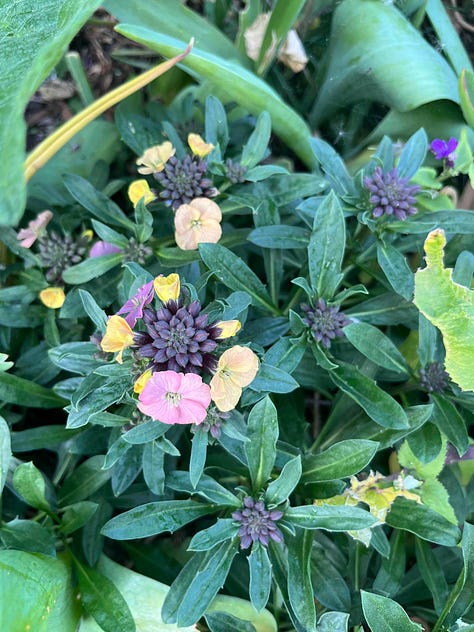
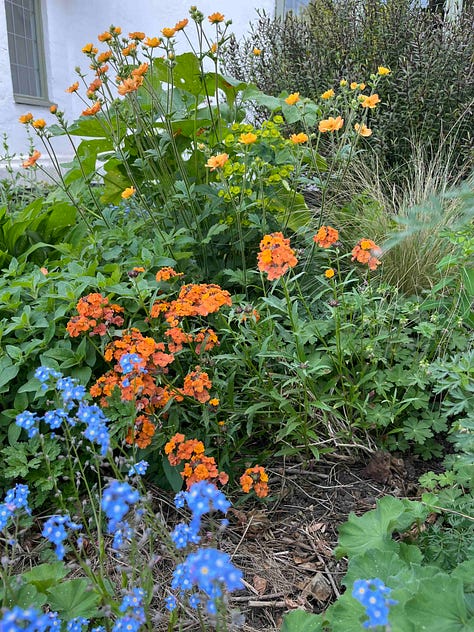
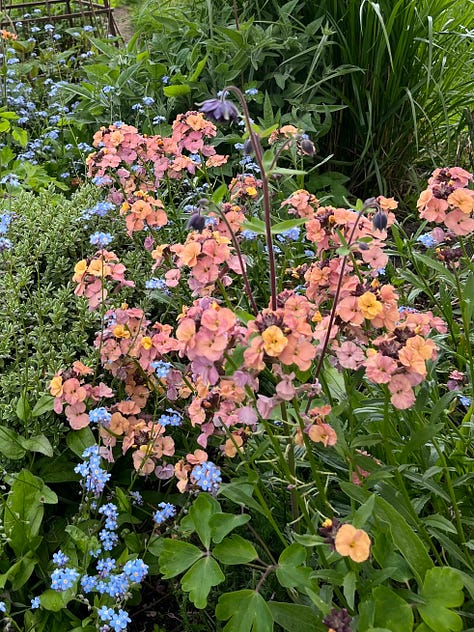
I particularly love the perennial wallflowers like ‘Bowles Mauve’, that flower on and on from spring into summer. Two years ago I discovered ‘Pastel Patchwork’, but this doesn’t seem to be widely available any more, and sadly it hasn’t returned in my garden. Instead I have ‘Constant Cheer’ which has flowers in similar pastel tones, but with a habit that seems to be more robust, with bigger leaves and stronger stems. It’s available as plug plants from Suttons. ‘Apricot Twist’ has come back for the third year, but I mustn’t forget to take cuttings this year as I know it isn’t long-lived. I also grew Erysimum mutabile from seed last year, but sadly this didn’t survive the winter either, having grown into quite a sizeable plant. Such are the games you play with growing plants - you have to accept the losses and move on.
Biennials
Biennials such as foxgloves, aquilegias and sweet rocket play an important role this month, joining the dots up in the garden. I have never planted or sown any aquilegias here but they have found their way here, and I let them seed around to see what comes up. I have a particularly lovely bi-coloured purple one, a pale pink one, and another that has just popped up and is about to flower with greeny white buds.
I always think of sweet rocket as the spring equivalent of Verbena bonariensis, with tall spires of airy mauve (and white) flowers. The bees love it and it has the added bonus of masses of scent. It seeds itself gently around the garden and appears in different spots each year. Kim Fleming at Marlston Farmgirl gave me some seed of a very pale pink form last year and I’m hoping it will come back this year - there is lots in bud at the moment so I’m just waiting for it to burst open.
Biennials should be sown in late May or early June - I usually sow them in modular seed trays and plant them out in the garden in autumn, to flower the following year.
Garden Tasks for May
• plant out dahlias and other summer tubers and bulbs
• lift and divide congested clumps of daffodils
• pull up clumps of forget-me-nots once they have finished flowering
• put in supports for perennials before the growth gets too tall
• think out direct sowings of vegetables
• plant out French beans, courgettes and squash
• tie in sweet peas as they grow up their supports
• feed container plants every 2-3 weeks with a liquid feed
• hoe weeds regularly in the vegetable patch
Thank you for reading this post and please like, share or comment which will all help the algorithms and make my work more visible on the Substack platform.
Clare x






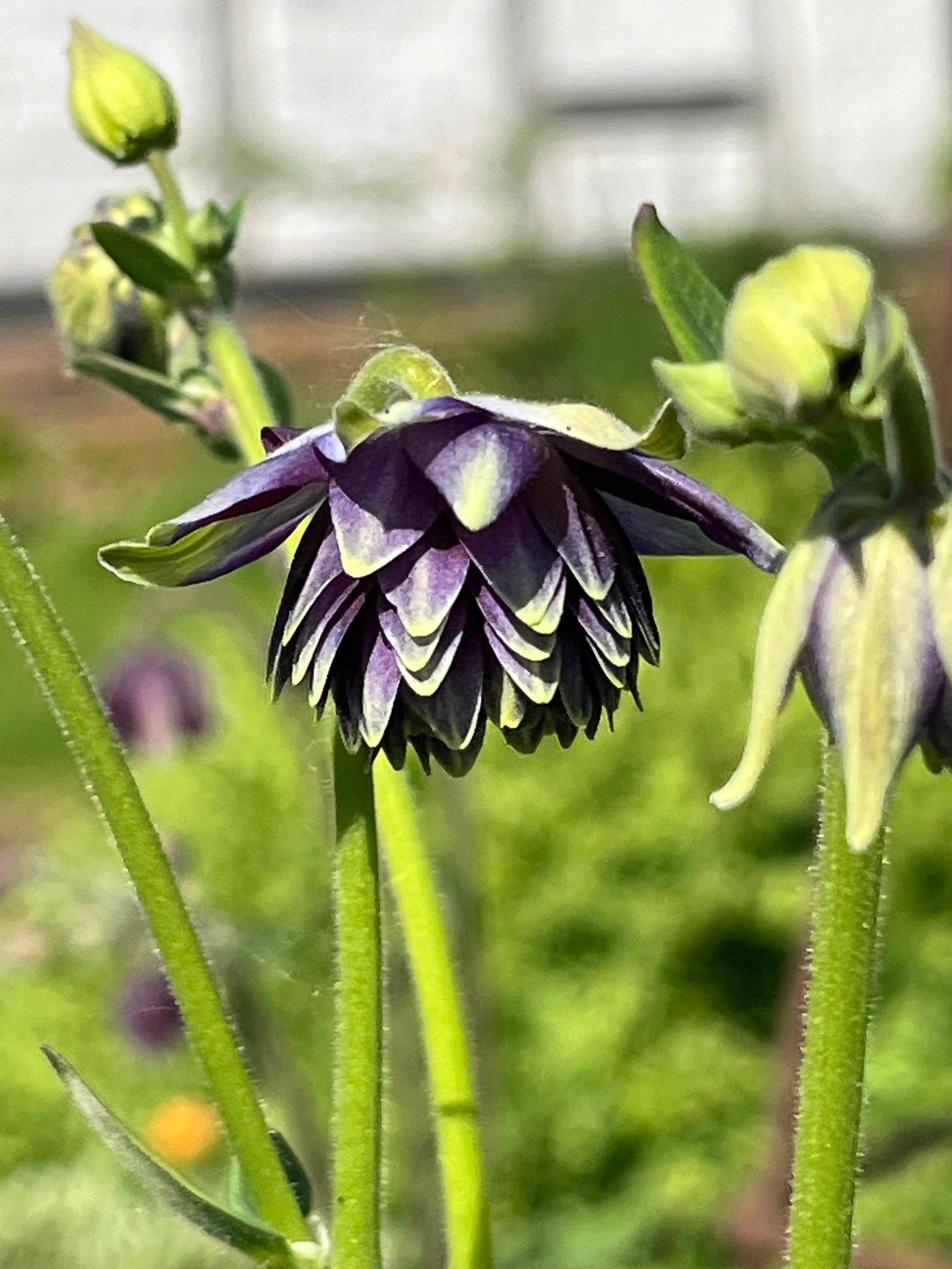
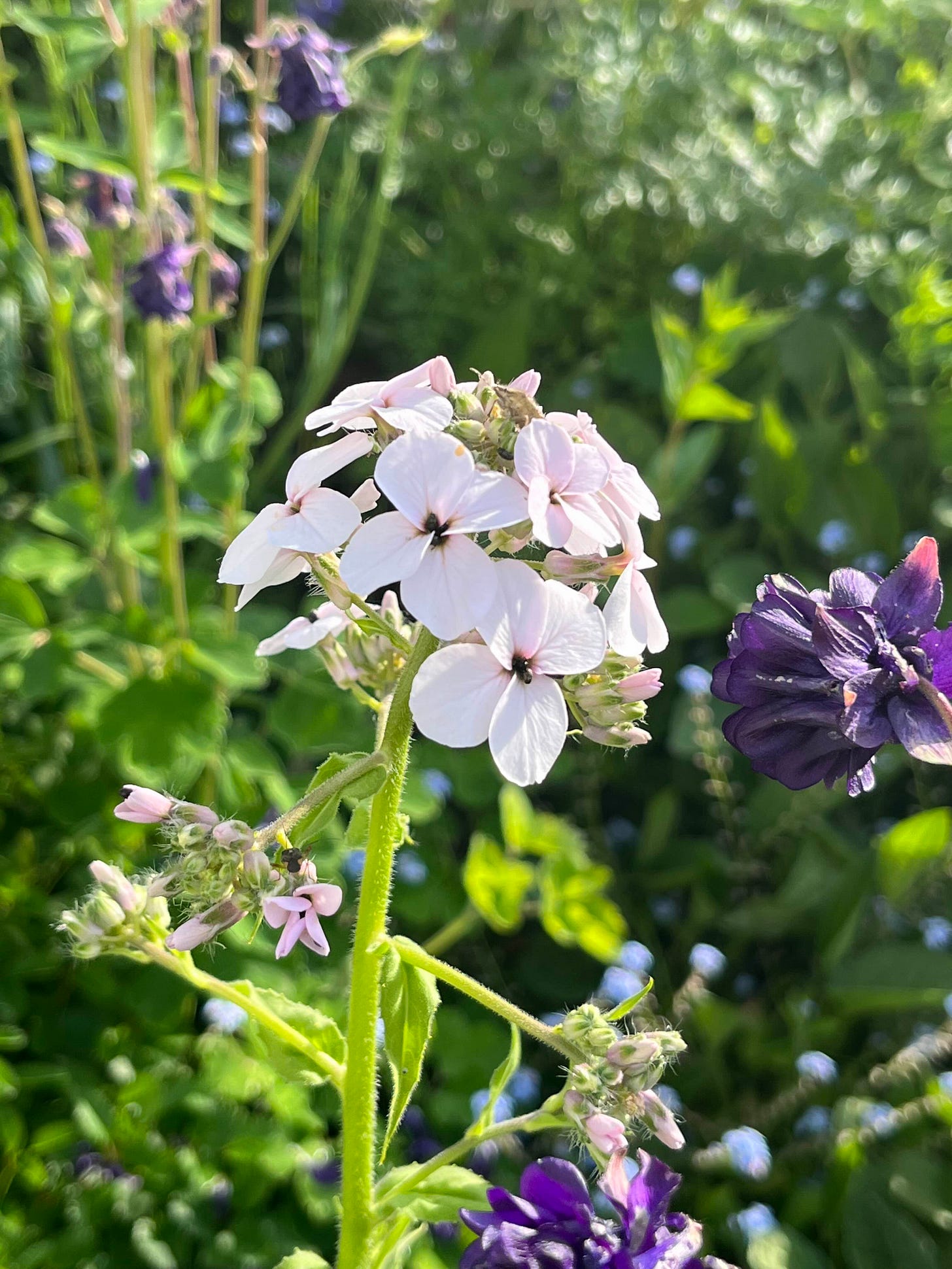
An auricula workshop sounds amazing. I didn't realise that Viburnum could be happy in a very large container - interesting.